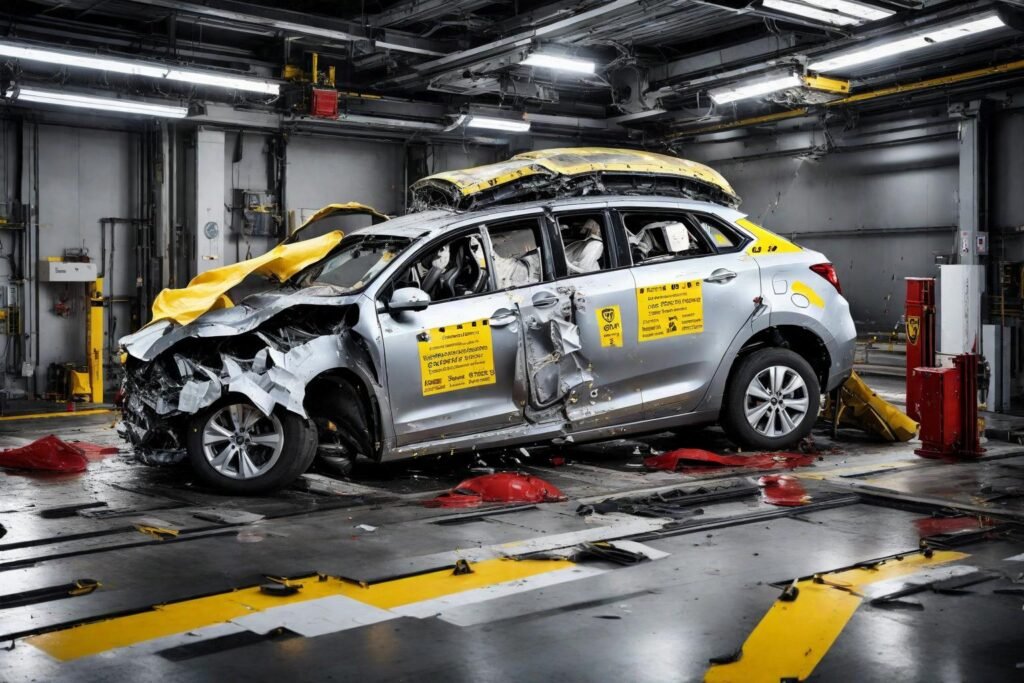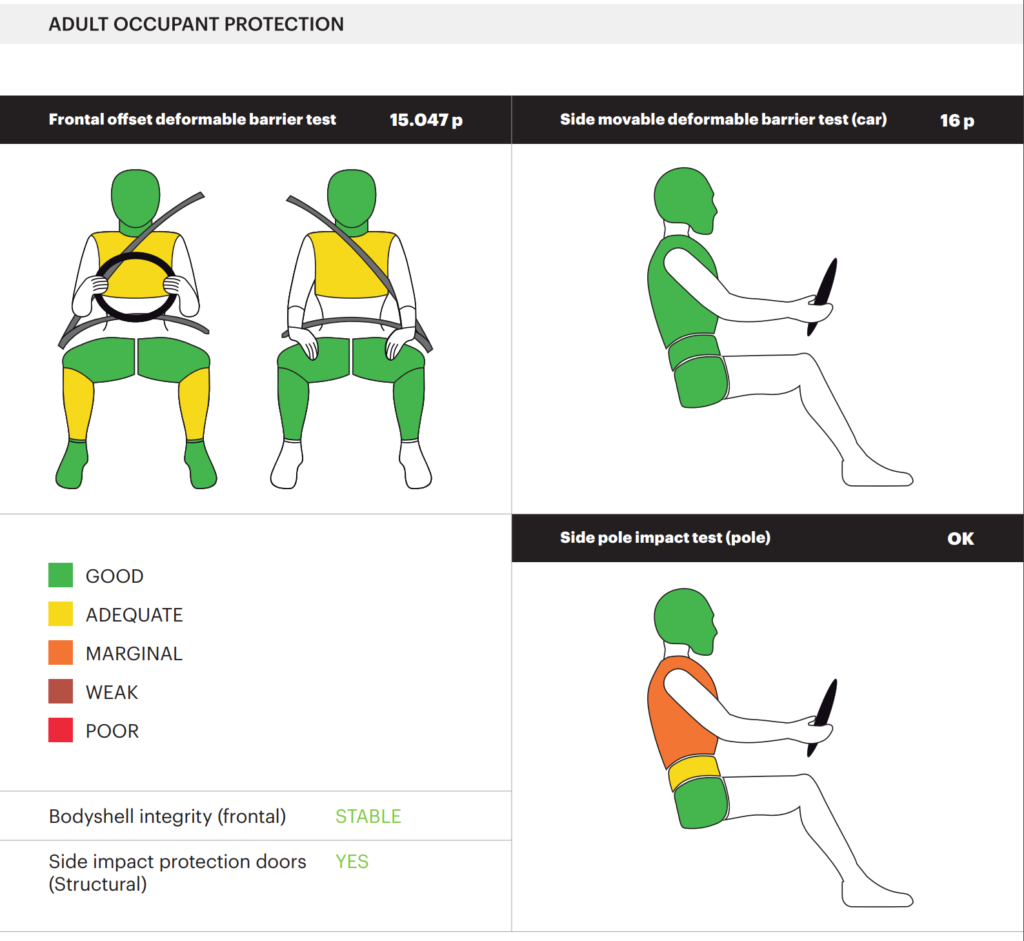In the fast-paced world of automobiles, safety is a paramount concern for both manufacturers and consumers. One significant player in ensuring vehicle safety is the Global New Car Assessment Programme, or Global NCAP. This article delves into the intricate details of Global NCAP, exploring crash tests, evaluation processes, and the critical role it plays in shaping the automotive landscape
Table of Contents
What is Global NCAP
Definition and Purpose
Global NCAP, short for Global New Car Assessment Programme, is an international organization dedicated to evaluating the safety of vehicles. Its primary purpose is to provide consumers with information about the safety performance of different car models, encouraging manufacturers to prioritize safety in their designs.
Significance of Crash Tests
Ensuring Vehicle Safety: Global NCAP achieves its mission through rigorous crash tests designed to simulate real-world accident scenarios. These tests are crucial in assessing how well a vehicle can protect its occupants in the event of a collision.
Impact on Consumer Choices: The results of NCAP crash tests have a significant impact on consumer choices. Car buyers often consider safety ratings when making purchasing decisions, leading manufacturers to enhance safety features to meet consumer demand.

How Global NCAP Operates
Testing Procedures
Global NCAP employs a series of standardized testing procedures to evaluate vehicles consistently. These procedures include frontal impact tests, side-impact tests, and overlap tests, each designed to assess specific aspects of a vehicle’s safety.
Evaluation Criteria
Structural Integrity: One key aspect evaluated is the structural integrity of a vehicle. This includes how well the car’s frame and chassis withstand impact, minimizing deformation and protecting occupants.
Safety Features: The presence and effectiveness of safety features, such as airbags and collision avoidance systems, are assessed. These features contribute significantly to a vehicle’s overall safety rating.
Documentation Requirements: Manufacturers are required to submit comprehensive documentation detailing the safety features and designs of their vehicles. This documentation is a crucial part of the evaluation process.
Sample Global NCAP rating for TATA Safari:
Checkout full Global NCAP Rating PDF





Types of Crash Tests
Frontal Impact Tests
Simulating a head-on collision, frontal impact tests assess how well a vehicle absorbs and mitigates the impact to protect occupants. This test evaluates the front-end structure of the car.
Side-Impact Tests
Measuring a car’s ability to withstand side collisions, this test assesses the effectiveness of safety features in minimizing injury risks to occupants on the side of the impact.
Overlap Tests
Overlap tests simulate scenarios where only a part of the car is impacted. This provides a more nuanced understanding of a vehicle’s safety profile in partial collision situations.
Global NCAP Evaluation Process
Rating Scale and Categories
Global-NCAP uses a rating scale ranging from zero to five stars. Each star represents a different level of safety, with five stars indicating the highest level of safety performance.
Understanding NCAP’s rating scale is crucial for interpreting results. Higher star ratings signify better safety performance, while lower ratings indicate areas where improvements may be needed.
Documentation Requirements
Manufacturer Submissions: Manufacturers play a pivotal role by submitting detailed documentation. This includes information on safety technologies, materials used, and design features, providing a comprehensive overview for evaluation.
Verification Process: NCAP meticulously verifies the submitted documentation to ensure its accuracy. This verification process adds an extra layer of reliability to the safety ratings.
The Role of Technology in Car Safety
Advanced Safety Features
Technological advancements, such as automatic emergency braking and lane departure warnings, play a crucial role in enhancing vehicle safety. Global-NCAP evaluates the integration and effectiveness of these features in its assessments.
Integration in Crash Tests
Global-NCAP adapts its testing procedures to incorporate the latest safety technologies. This ensures that the assessments remain relevant in an era of rapid technological evolution within the automotive industry.
Impact on the Automotive Industry
Improving Vehicle Designs
The influence of NCAP has driven manufacturers to invest in safer vehicle designs. This includes innovations in materials, structural engineering, and the integration of advanced safety features.
Encouraging Safety Innovations
The constant push for higher safety ratings encourages the automotive industry to develop cutting-edge safety technologies. This proactive approach benefits consumers by providing safer vehicles on the market.
Consumer Awareness and Decision Making
Understanding NCAP Ratings
Consumers are encouraged to understand the significance of NCAP ratings. This knowledge empowers them to make informed decisions, prioritizing safety when choosing a vehicle.
Implications for Car Buyers
The article guides readers on how to factor NCAP ratings into their decision-making process. This includes considerations for the safety features that matter most to individual buyers.
Conclusion
The Role of Global NCAP in Shaping the Automotive Industry and Impact on Safety Standards and Consumer Choices. From comprehensive crash tests to in-depth evaluations to open documentation processes, global NCAP empowers manufacturers and consumers alike to drive safer.
When you’re on the hunt for the perfect car, armed with insights from global NCAP, don’t forget that safety isn’t just a feature — it’s a responsibility. Drive with peace of mind knowing that your commitment to safety goes beyond the wheel, and that it’s reflected in every crash test score, every rating and every innovation.
Frequently Asked Questions
- How often does Global-NCAP update its testing methods?
Global NCAP periodically reviews and updates its testing methods to align with technological advancements and emerging safety concerns. - Can a car with a lower rating still be considered safe?
While a higher rating indicates better safety performance, a lower-rated car may still meet minimum safety standards. Consumers should consider their specific needs and preferences. - Do all car manufacturers participate in Global-NCAP testing?
Participation in Global NCAP testing is voluntary, and not all manufacturers choose to submit their vehicles for evaluation. - Are Global-NCAP ratings consistent across different regions?
Global NCAP’s ratings are generally consistent, but regional variations may occur due to differences in vehicle models, safety regulations, and testing facilities. - How can consumers access Global-NCAP ratings for specific car models?
Consumers can visit the official Global NCAP website to access detailed ratings and information for specific car models. - Do Global-NCAP ratings consider real-world accident data?
While Global NCAP primarily relies on standardized crash tests, it may incorporate real-world accident data to supplement its evaluations and ensure a comprehensive assessment. - How can manufacturers use Global-NCAP feedback to improve their vehicles?
Manufacturers can leverage feedback from Global NCAP to enhance safety features, strengthen structural integrity, and address any shortcomings identified during evaluations. - Are there any plans for Global-NCAP to expand its testing categories?
Global NCAP continually evaluates the need to expand testing categories to cover emerging safety concerns, ensuring that its assessments remain comprehensive and relevant. - What impact do Global-NCAP ratings have on insurance premiums?
While insurance companies may consider safety ratings among various factors, the direct impact on premiums may vary. Consumers should check with their insurance providers for specific details. - How can consumers contribute to the improvement of vehicle safety standards?
Consumers can actively support safer driving practices, stay informed about safety features, and choose vehicles with higher Global NCAP ratings, encouraging manufacturers to prioritize safety in their designs. - How can consumers stay updated on the latest Global-NCAP ratings?
Consumers can regularly visit the official Global NCAP website, subscribe to newsletters, and follow the organization’s social media channels for the latest updates on vehicle safety ratings. - What role do governments play in enforcing safety standards based on Global-NCAP ratings?
Governments may use Global NCAP ratings as a reference when formulating or updating safety regulations. The organization collaborates with regulatory bodies to contribute to the establishment of robust safety standards. - Are electric vehicles subject to the same safety standards as traditional vehicles in Global-NCAP tests?
Yes, electric vehicles are subjected to the same safety standards as traditional vehicles in Global NCAP tests, ensuring a comprehensive evaluation of their safety features and performance. - How does Global-NCAP contribute to global road safety initiatives?
Global NCAP actively engages in global road safety initiatives, collaborating with organizations, governments, and advocacy groups to promote and enhance vehicle safety standards on a global scale.
Checkout our other post: Unveiling the Best Cars Under 10 Lakhs That Won’t Break the Bank!

